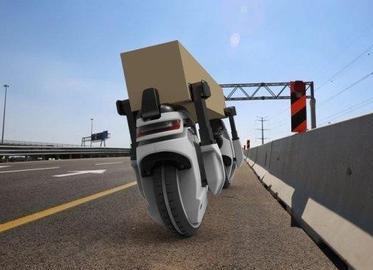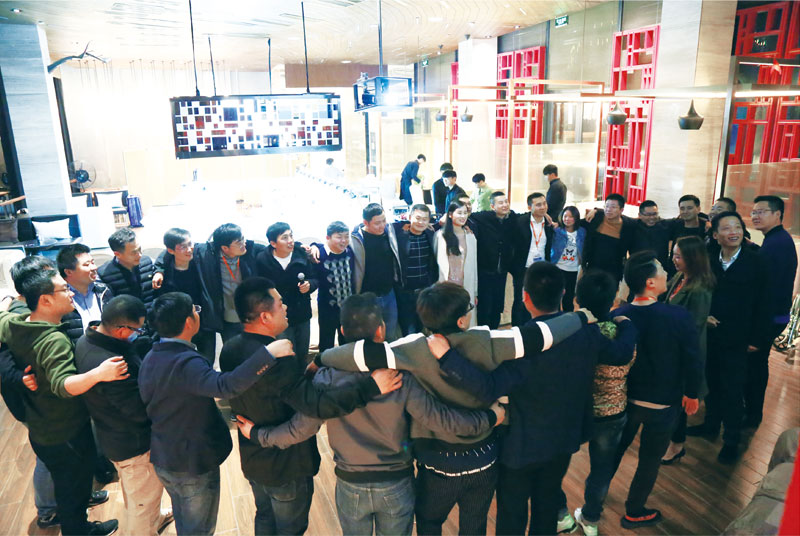["The cost of robots itself is not the highest, and the cost of building a matching infrastructure is well-known."]
On a lazy Sunday afternoon, Shirley came back from the gym and ordered a creamy bacon pasta and a tuna salad through the ordering software JustEat. Half an hour later, the phone sent a message: "Your lunch is already at the door." Shirley opened the door and saw a small thing the size of a stroller parked at the door. As Shirley approaches it, the lid on the top automatically lifts, and the paper bag inside contains the pasta and salad ordered by Shirley.
Such a scenario will soon become more and more common in Europe. Like JustEat, another UK food delivery startup, Pronto, has also started using robot delivery services. In addition to food delivery, large supermarkets will gradually use this six-wheeled autonomous driving robot to provide customers with door-to-door delivery services. Metro has taken the lead in trying robot transport services in Düsseldorf, Germany and Bern, Switzerland. German logistics company Hermes has gradually used robots to replace couriers.
Technology simplifies life
Starship, a company that produces the six-wheeled driverless robot transporter, has a R&D center in Tallinn, Estonia. In the past nine months, it has tested robot transporters in 12 countries. This is also the first attempt to commercialize the company's products, which will provide unmanned vehicle transportation services to customers who are truly ordering.
Starship COO Allan Martinson told the First Financial Daily reporter: "Cities carrying out this service will have one or two fleets of 5 to 10 robots. The business will also be carried out in cities in the United States in the next few months."
According to Martinson, these unmanned robots will travel on the sidewalk, delivering goods ranging from 2 to 3 miles. They can carry items weighing up to 20 pounds and speeds of about 4 miles per hour. Starship will help the first customers to operate and manage these robots, including tracking their performance and the robot’s automatic emergency response if they encounter problems. According to Starship, during the trial stage, the robots had already dealt with 400,000 customers.
"This is a groundbreaking project and also heralds the future direction of the express delivery industry - robot shipping. We will use real robots to serve real customers to provide good experience to the industry," said Ahti Heinla, co-founder, CEO and CTO.
In the view of JustEat CEO ODavid Buttres, technology is meaningful only by constantly simplifying people's lives through new technologies. Robot delivery is a great example.
Although robots transport goods is not new, robots transport goods in the past are mainly used for industrial purposes. At the Henkel factory in Düsseldorf, Germany, the reporter saw an unmanned robot transport vehicle, which was specifically responsible for unloading goods from the production line and sending them to a storage area dozens of meters away. The robot does not require workers to operate, can drive on the established route, and it will immediately stop working whenever someone touches it.
According to the person in charge of Henkel's factory, the factory has been using this robot for six or seven years, but it is also the only robot in the factory responsible for transporting goods. Even so, it still has about 50% of the time it is idle. "The cost of robots itself is actually not the highest, and the cost of building a matching infrastructure is well-known." The person in charge told reporters.
China's first model is expected
The increasing importance of the role of robots in the logistics industry has become a trend. In China, Cainiao Network, which includes major express delivery brands such as SF Express, Shentong, YTO Express, and ZTO Express, has completed the research and development of multiple projects such as terminal delivery robots and warehouse picking robots, and will be put into use this year.
Cainiao Network secretly operated the "ET. Logistics Laboratory" at the end of last year.
The new in-warehouse sorting robot developed by "ET. Logistics Laboratory" and robot teams from well-known universities in the United States and China are about to enter the trial operation stage. Cainiao has selected a large experimental warehouse to provide a robot matrix operation environment. This type of robot is a lifting robot. In addition to the sensitivity and intelligence of the robot itself, the core of its application lies in the powerful system algorithm support. The multi-system algorithm developed by Cainiao Network can not only schedule the operation of hundreds of robots in the warehouse, but also help the robots quickly select the optimal path and automatically avoid obstacles.
On the distribution side, the first unmanned delivery robot in China that is also being developed by "ET. Logistics Laboratory" is expected to be put into use this year. This type of robot is suitable for delivery in relatively closed residential communities and corporate parks and office buildings in the last few hundred meters. After receiving the instruction, the robot can go to the distribution center to pick up the parts and quickly select the optimal route through intelligent calculation to deliver the goods to the recipient. In order to adapt to complex environments, the design includes functions such as taking the elevator by yourself, giving way to others, avoiding obstacles, and automatically finding indoor locations. Cainiao has started testing drone delivery in rural areas and has made breakthrough progress in key indicators such as battery life and delivery scope.
The combination of smart logistics and O2O will bring explosive growth to the market. Community O2O is a subdivided concept under the same city O2O, referring to the O2O market that meets the living needs of community residents within a range of 3 to 5 kilometers around the community. According to the latest report released by consulting company Roland Berger last month, the scale of China's same-city O2O market will continue to expand and is expected to exceed one trillion yuan in 2020; the scale of the community O2O market will grow nearly 15 times in five years.







 EN
EN CN
CN
